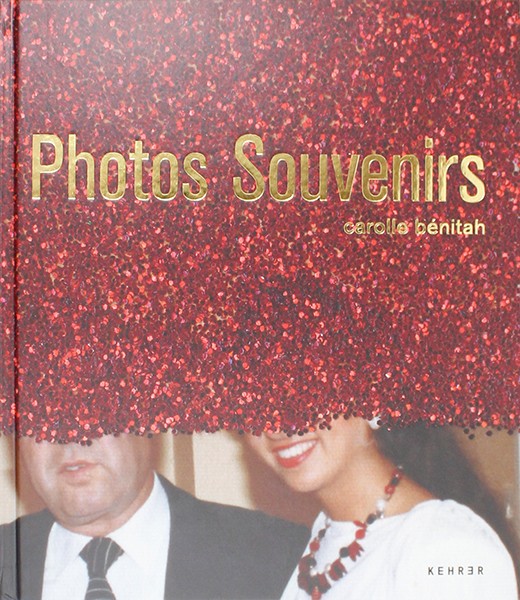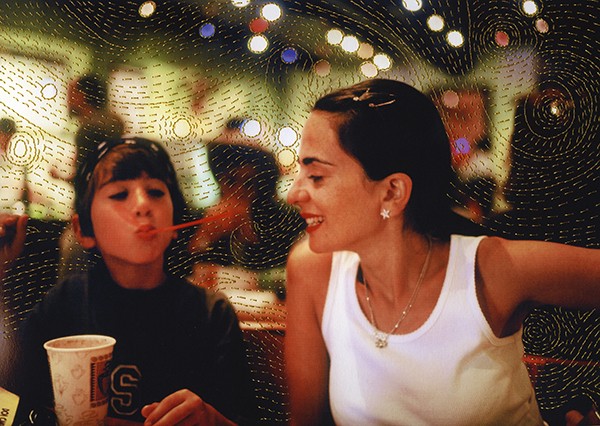This photobook, published in 2016 and created by Carolle Benitah, displays reworked, archival photographs taken from the the artists Moroccan childhood and adolescence. These images that Benitah used here are have been taken in a mostly candid manner. However, some of which also being tableau, as the family has been placed and arranged in the frame for a group portrait. With these photographs she uses methods such as embroidery, beading and some other forms of multi-media to produce a new meaning from these old and forgotten images.
Carolle Benitah, born in 1965, Casablanca, is a 57 year old artist and previous fashion designer that explores the theme of identity through family photographs through her work. Benitah states in her photobook ‘Photo Souvenirs’ that she created this series to construct a fantasy album, which deconstructs the myth of the ideal family to produce a more nuanced image. In addition, Benitah uses needlework as a method in which to create a sense of drama, conflict and pain that is lacking in these photographs that do not display the whole truth. The artist has claimed that this slow and precise process is a metaphor for the shaping of one’s identity and for the passage of time. As well as this, needlework is often related to women and motherly duties, meaning this may be a protest of the expectations of woman’s roles in a family and regaining a sense of power for Benitah herself, subverting ideologies that claim women must not show characteristics such as anger. This photobook may have originally only served the purpose of acting as a kind of therapy for Benitah, but could also be argued to provide a service to an audience with complicated and difficult families, which many have, in particular women who find themselves in these places of familial untruthfulness. This book was received positively by many and named one of 2016’s best books by international curator/essayist Yumi Goto.
The photobook itself is a 21×24 cm printed hard-cover, presenting an image of one of Benitah’s pieces from the centre of her book. Containing 112 pages and 53 images, the paper used to display these photographs on are glossy throughout, kept together with a red running stitch binding. Although some of the archived images Benitah used here are black and white, there are elements of juxtaposing colour throughout, that bring new life and messages to the forgotten photographs, this usually being red embroidery or beading. The narrative of Bentiah’s Photo Souvenirs centres around her family archives, focusing on her childhood and selecting images which relate to memory and loss. This is emphasised by the chronological order in which the photographs are placed. The first image showcased in the photobook showcases Benitah as a child within a black and white family portrait and the final image displaying her and her son in a colour photograph. This progression of time is not only displayed through the growth of Benitah herself, but also in the development of photographic technology as the images slowly posses a higher quality as the book progresses. The title ‘Photo Souvenirs’ suggests that these photographs are a way of holding onto and remembering the past for Benitah’s family, which could also mean that these images were originally a façade, before Benitah’s manipulation of them, concealing the truth of what is often a complicated and messy reality. The design and layout of this photobook mostly presents one image within every double page, leaving a large amount of empty space around it and often a blank page next to it. This choice of layout could be a choice to bring attention to one image at a time, allowing it to resonate and connect with the viewer more. Benitah does not accompany these photographs with pieces of text throughout her photobook, but only features text in the final pages with mentions and a description of the series.





